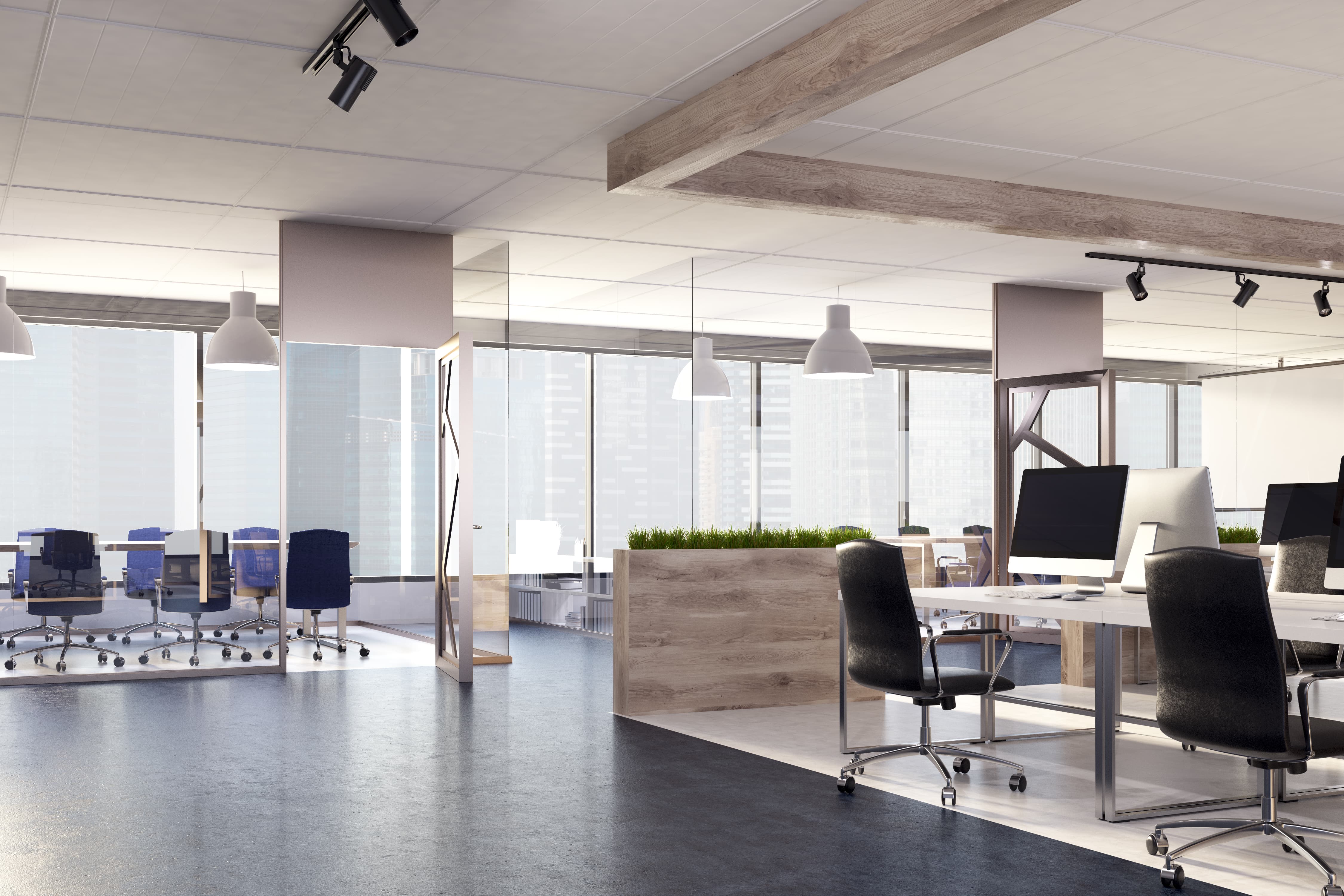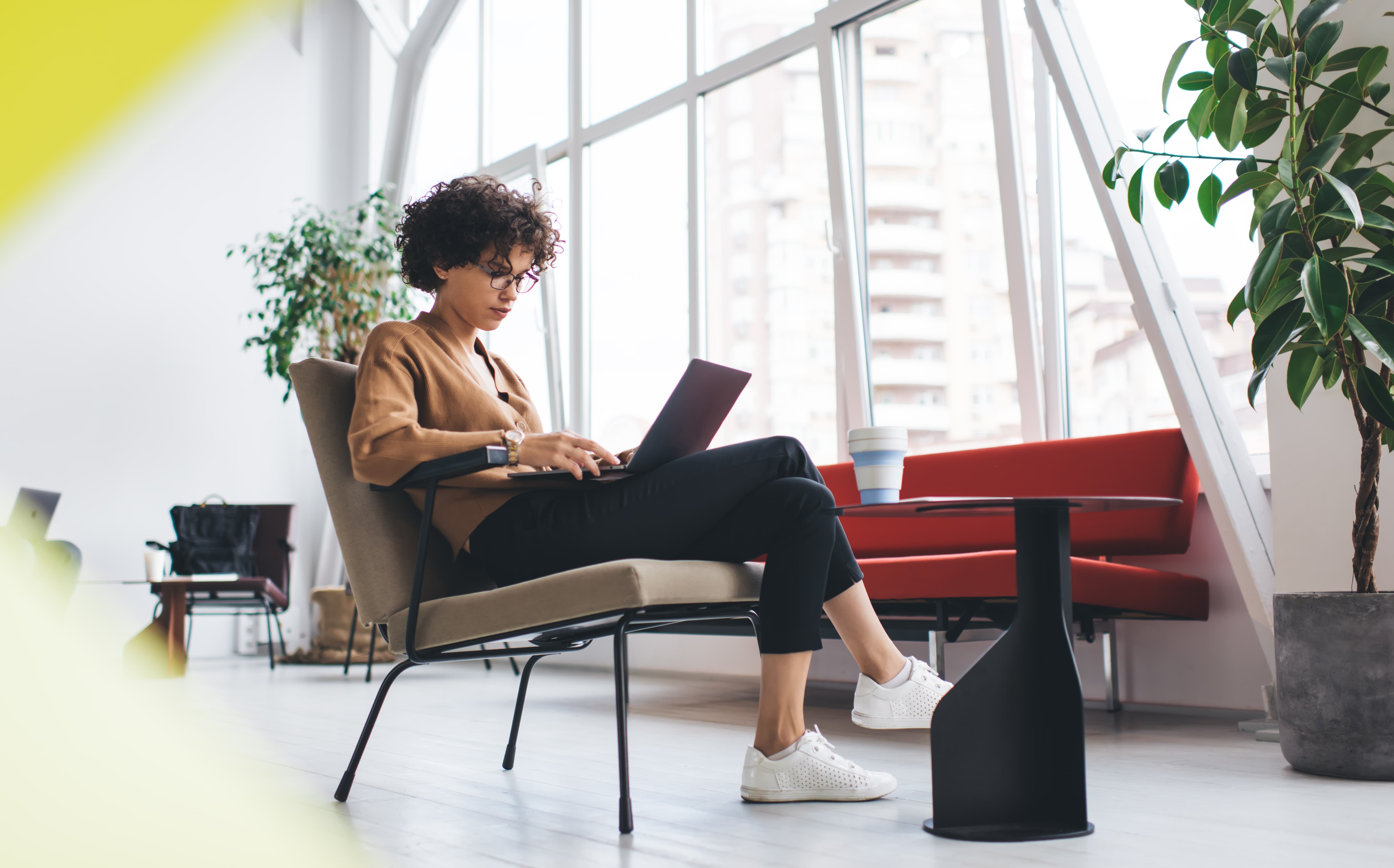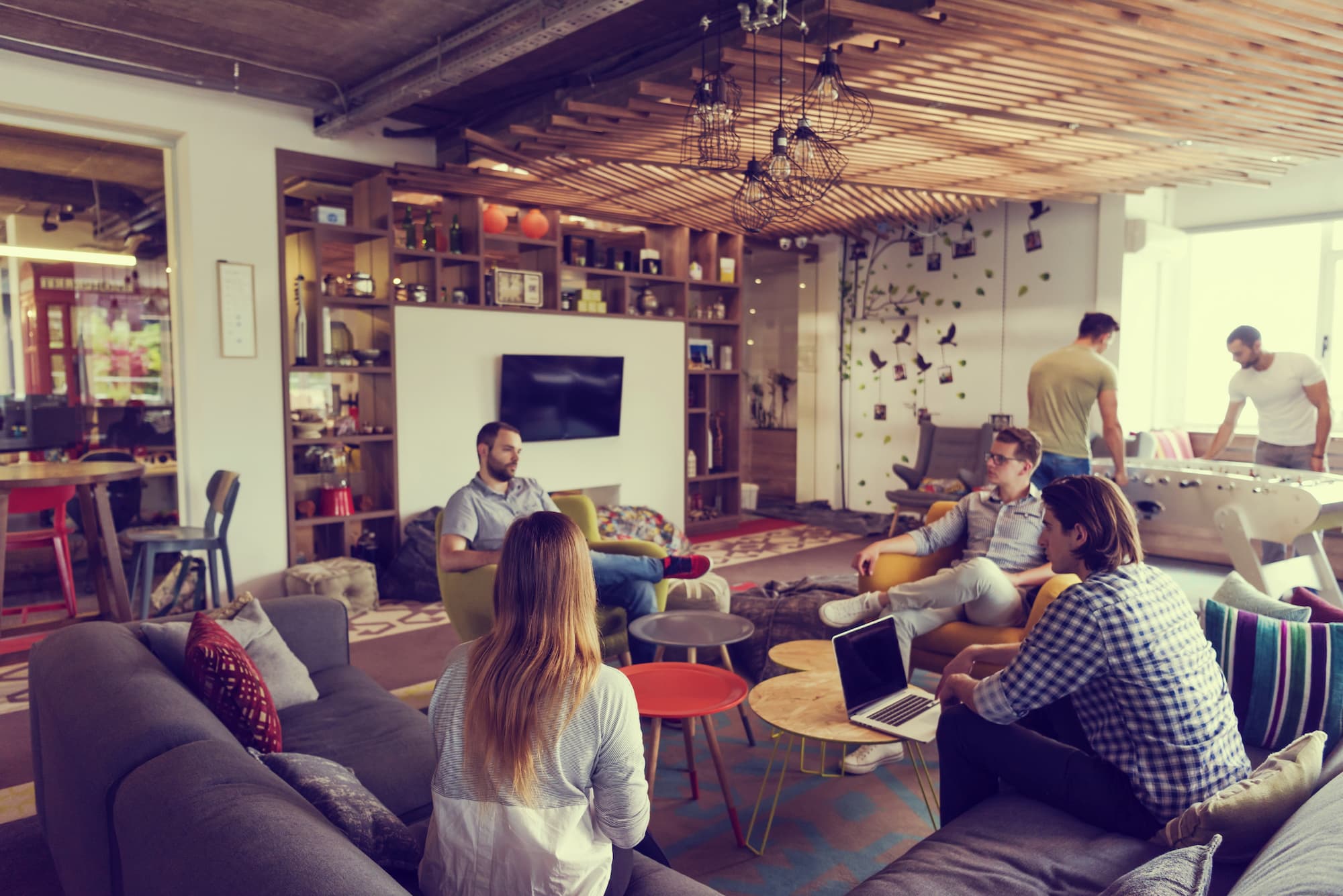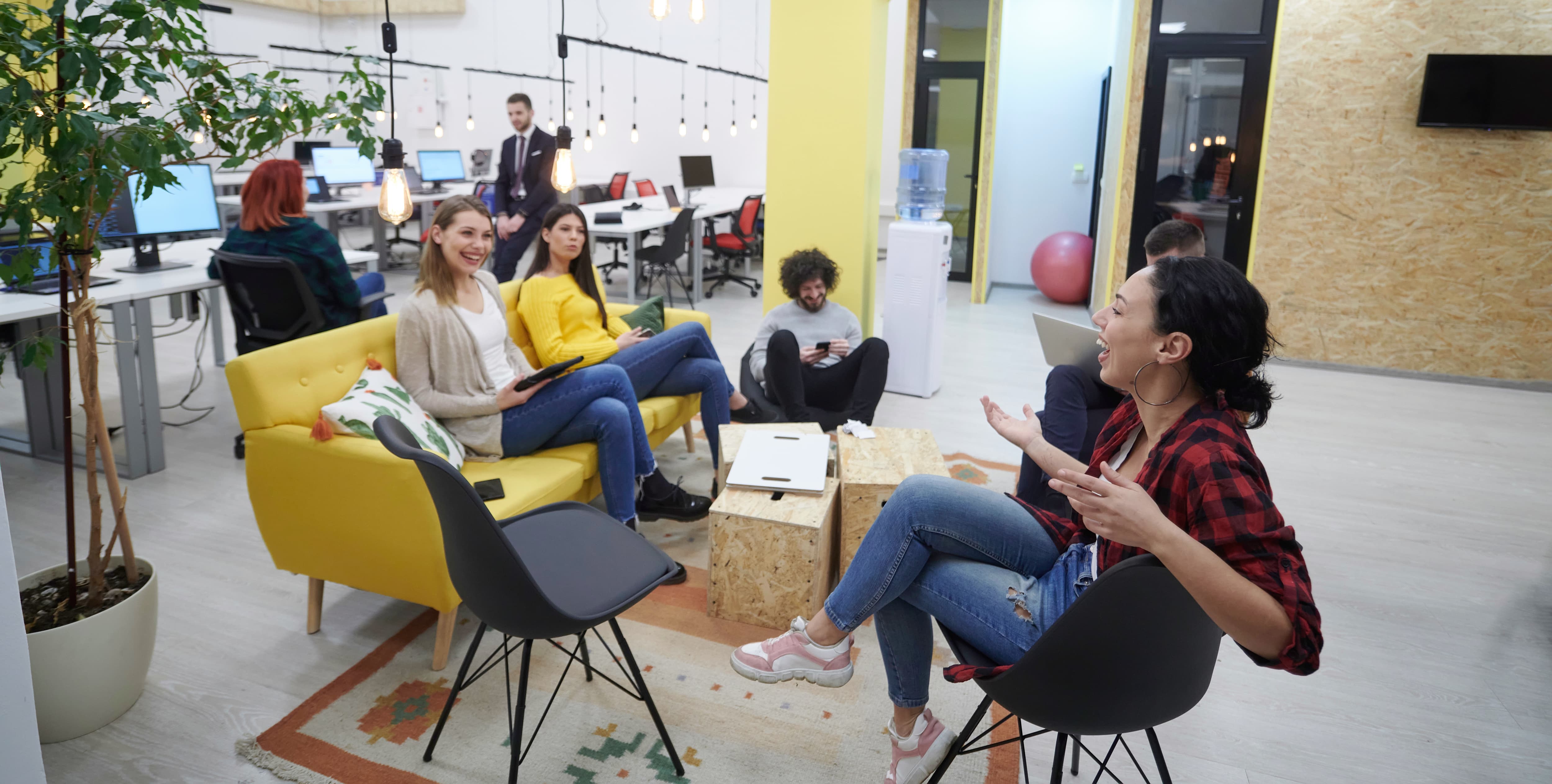Would you believe us if we told you that 97 percent of people felt their workplace was a “symbol of whether or not they were valued by their employer?” What if we went on to say that despite this, only 37 percent of people “thought their offices had been designed with people in mind?”
According to results of a survey conducted by Management Today magazine, it’s true.
What about your business? Is the office strategically designed for the people who work in it, or does it send the wrong message about their value within your organization?
Whether you’re planning an office redesign or starting from square one in a new space, office design matters. From the layout to furniture to air quality, the decisions you make will impact your people’s well-being, and as a result, overall productivity.
Nix the Noise
Even mildly noisy offices negatively affect employee stress and motivation levels. A study conducted by Cornell University discovered that the negative impact went beyond what people previously thought. In addition to markedly higher stress levels, participants who worked in noisy offices also made “40 percent fewer attempts to solve an unsolvable puzzle and made only half as many ergonomic adjustments to their workstations.” This proves that noisy work environments are not just annoying but also harmful to employees’ mental and physical health.
As such, in support of employee well-being and the subsequent improvement in productivity, progressive employers are taking measures to minimize this type of distraction in the office.
Going Green
In a study on the impact of greenery in the workplace, Dr. Craig Knight discusses a right and wrong way to design office interiors. He indicates that experts are gaining a new depth of understanding, stating, “We are now developing a template for a genuinely smart office.” And what does he suggest is a key component of smart office design? Living plants. In fact, his research demonstrated a 15 percent boost in productivity when previously bare offices were enhanced with greenery. The reason given for this improvement being that plant life makes people “more physically, cognitively, and emotionally involved in their work.”
Stay On the Move
Employees should be encouraged to move around frequently throughout the day. Office furniture serves as a great tool to promote regular movement; not because the furniture is so uncomfortable people can’t bear to spend another moment sitting in it, but because the furniture is smart enough to accommodate increased movement.
Sit-stand workstations offer a great example of this. In a self-proclaimed breakthrough study, researchers found that those who used sit-stand desks sat for an hour and a half less each day than their counterparts did. The result? Those with adjustable work surfaces were a remarkable 46 percent more productive than those working at a sit-only desk. What’s more, almost 75 percent of these workers reported a decrease in physical discomfort at work.
Along the same lines, office layout and amenities also create opportunities for people to move around more.
Although a polarizing idea, innovative businesses are benefiting from placing public spaces (printer, photocopier, washrooms, coffee lounge) away from work areas, thereby requiring workers to walk around more. Not only does this offer people a much-needed chance to rest their mind and refresh the body, but it also increases the likelihood that coworkers will engage in casual and creative discussions. And with a report suggesting that over “80% of the most valuable interactions” between coworkers being dubbed as informal, it pays to keep workers on the go.
Healthy Environment
When considering elements of office design and how they impact people, the less glamorous factors are often overlooked. Air quality, temperature, and lighting get pushed aside to make way for more obvious and controllable factors such as wall color and furniture. Unfortunately, this isn’t a smart move for business.
As an example, ignoring something as important as air quality can lead to increased cases of Sick Building Syndrome (SBS), a condition caused by poor ventilation. SBS is reported to negatively impact people’s productivity at work, causing people to leave work early (3 percent) and reducing others’ ability to function effectively while at work (8 percent).
As far as office temperature goes, it’s hard to please everyone (if not impossible). Deviating too far from the 21-23 degree bubble that the Canadian Centre for Occupational Health & Safety recommends leads to disgruntled employees and a drop in work output. However, keeping with these guidelines ensures up to 80 percent of workers will feel satisfied.
Last, but certainly not least, we come to lighting. Daylighting (illuminating the office with natural light) is the ideal lighting solution for most organizations. Exposure to sunlight throughout the day promotes a healthy circadian rhythm, which leads to optimal mental and physical health overall. Up to a 15 percent reduction in absenteeism in office workers and students has been attributed to effective daylighting strategies in offices and schools.
However, just because daylighting is ideal, doesn’t mean it’s always practical. In these cases, sufficient lighting options should be available to enhance people’s ability to complete a task effectively.
The Big Picture
With so much advice strewn about regarding good office design and its impact on employees, employers find that focusing on the science behind design helps them sift through all the information. At the end of the day, however, every organization is unique and benefits from personalized solutions for their specific business needs. The commissioner of CABE, a leading authority on strategic design and the UK Government’s design advisor, even went so far as to describe such a one-size-fits-all design strategy as the “holy grail of office design.” In other words, it doesn’t exist.
Instead, forward-thinking organizations can reach out to design experts to find a customized design solution, specific to the needs of their operation. At TruSpace, our consultants believe that smart office design is strategic. We’re confident that together, we can create a space that is both beautiful and functional while being authentic to your organization’s values. Contact a TruSpace consultant today.
What was once conventional is now outdated and ineffective – contributing to a decline in productivity for those who don’t keep up. If your organization needs help revising its space to make way for growth, get in contact with a TruSpace consultant today. Our experts will learn about your business and come up with a design solution to propel it forward.




